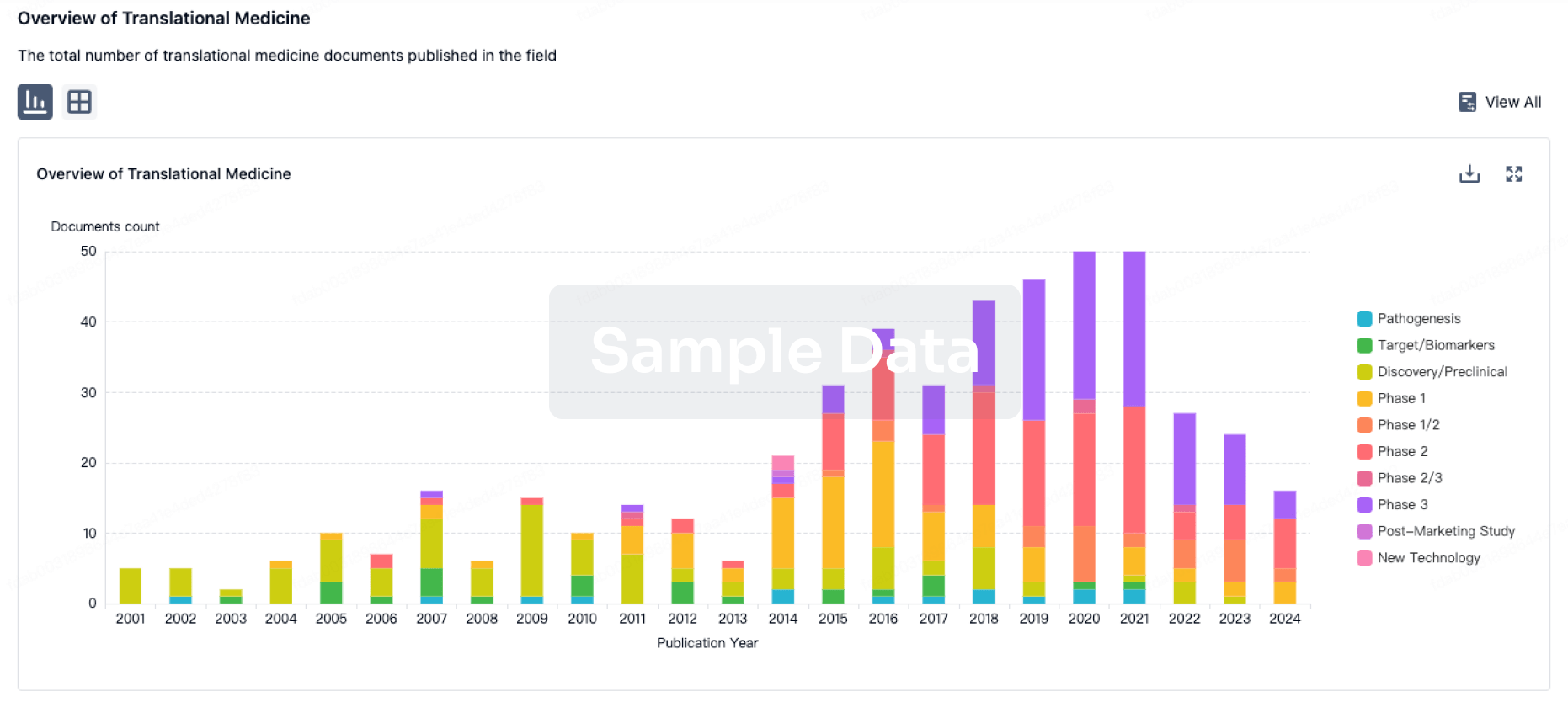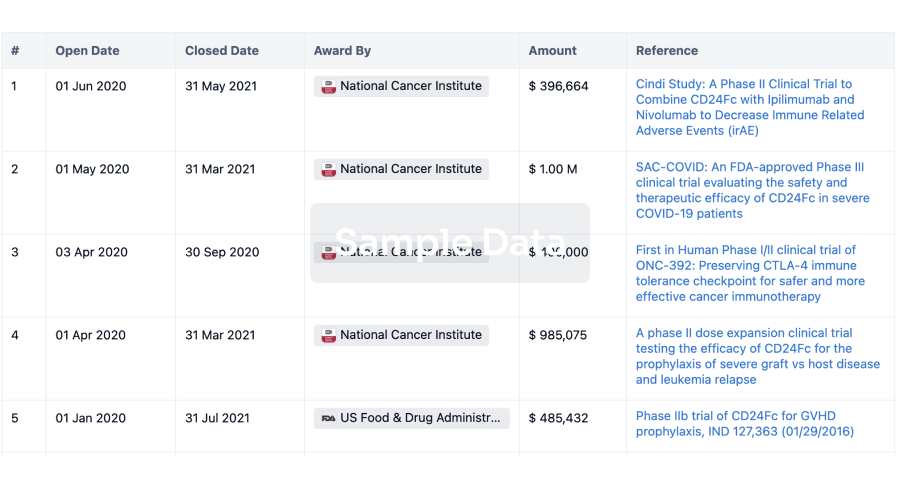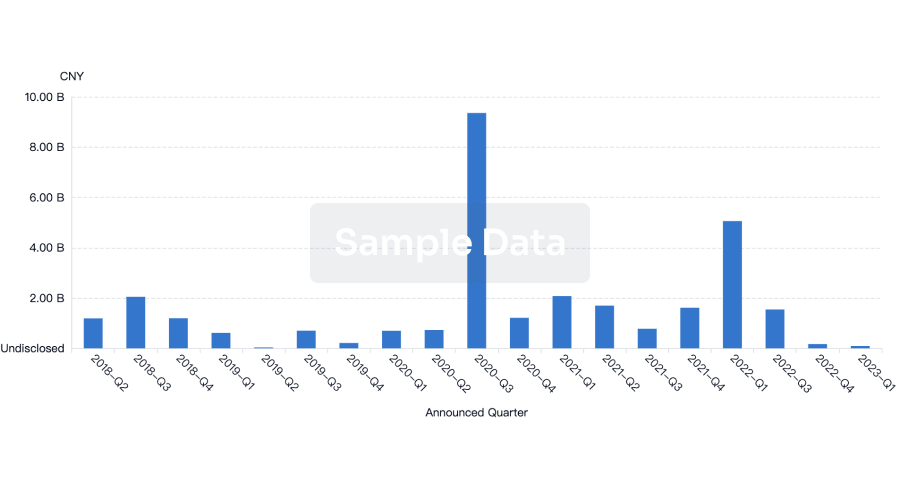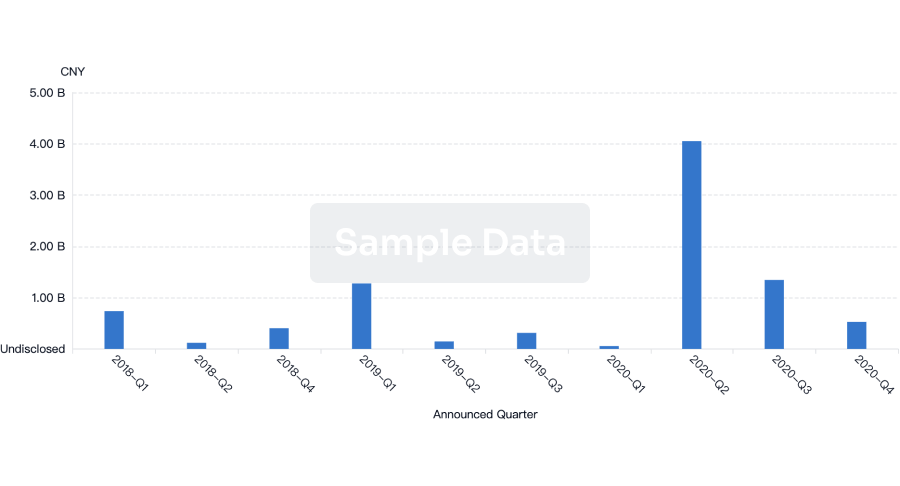Request Demo
Last update 09 Sep 2025

University of Debrecen
Last update 09 Sep 2025
Overview
Basic Info
Introduction The University of Debrecen, situated in Hungary's Debrecen city, is the country's oldest continuously functioning institution of higher education, dating back to 1538. The university offers an established English language program for international students, particularly in the field of medicine, which pioneered English education in 1986. Currently, nearly 5000 international students are enrolled at the university. The institution has a distinguished record, with five former students having won technical Academy Awards (Oscars) until 2014. |
Tags
Neoplasms
Immune System Diseases
Digestive System Disorders
Diagnostic radiopharmaceuticals
Radiolabeled antibody
Antibody
Disease domain score
A glimpse into the focused therapeutic areas
No Data
Technology Platform
Most used technologies in drug development
No Data
Targets
Most frequently developed targets
No Data
| Disease Domain | Count |
|---|---|
| Neoplasms | 4 |
| Immune System Diseases | 2 |
| Top 5 Drug Type | Count |
|---|---|
| Diagnostic radiopharmaceuticals | 3 |
| Radiolabeled antibody | 2 |
| Small molecule drug | 1 |
| Antibody | 1 |
| Synthetic peptide | 1 |
Related
6
Drugs associated with University of DebrecenTarget |
Mechanism Melanin modulators |
Active Org. |
Originator Org. |
Active Indication |
Inactive Indication- |
Drug Highest PhasePreclinical |
First Approval Ctry. / Loc.- |
First Approval Date- |
Target |
Mechanism MUC1 inhibitors |
Active Org. |
Originator Org. |
Active Indication |
Inactive Indication- |
Drug Highest PhasePreclinical |
First Approval Ctry. / Loc.- |
First Approval Date- |
Target |
Mechanism Kv1.3 blockers |
Active Org. |
Originator Org. |
Active Indication |
Inactive Indication- |
Drug Highest PhasePreclinical |
First Approval Ctry. / Loc.- |
First Approval Date- |
51
Clinical Trials associated with University of DebrecenNCT07129603
Investigation of the Role of Inflammatory Markers in the Early Detection of Cerebral Vasospasm, Delayed Cerebral Ischemia, and Meningitis Associated With External Cerebrospinal Fluid Drainage After Non-Traumatic Subarachnoid Hemorrhage - A Prospective Case-Control Study
Background Non-traumatic subarachnoid haemorrhage (SAH) is frequently complicated by delayed cerebral ischaemia (DCI) and by ventriculitis/meningitis when external CSF drains are used; bedside TCCD has limited accuracy for vasospasm detection, creating a need for early biomarkers.
Objective To assess the predictive and diagnostic performance of IL-6, IL-1β, TNFα, procalcitonin (PCT), C-reactive protein (CRP) and adrenomedullin (ADM) measured in CSF and serum for vasospasm, DCI, and drain-associated ventriculitis/meningitis after SAH; to test whether combining biomarkers improves accuracy versus routine parameters; and to explore associations with admission and day-14 serum 25-hydroxy-vitamin D.
Methods Prospective case-control study at the University of Debrecen (planned n≈100; enrolment 01-Nov-2024-31-Dec-2029). Adults with angiography-verified SAH requiring lumbar/ventricular drainage are included; traumatic SAH, prior 6-month meningitis, and immunosuppression are excluded. TCCD is performed daily for 14 days; suspected vasospasm is defined by mean flow velocity >120 cm/s, severe by >200 cm/s, with monitoring extended to day 21 if severe. Sampling: daily CSF IL-6/PCT/CRP until drain removal; IL-1β/TNFα/ADM at 0-2, 3-5, 6-8, 9-11, 12-14 days and at meningitis detection; serum 25-OH-D on drain insertion day and day 14. Outcomes at days 30/90/180: mortality, GOSE, Barthel, Karnofsky, mRS. Statistics: normality testing; t-test or non-parametric equivalents; χ² with Yates' correction; Bonferroni for multiplicity; ROC analysis for diagnostic/predictive performance.
Endpoints DCI: new unexplained CT ischaemia or a new unexplained neurological deficit >1 h. Drain-associated infection: infectologist-adjudicated ventriculitis/meningitis. Vasospasm: TCCD-suggested or DSA-confirmed.
Expected impact An accessible CSF/serum biomarker panel may enable earlier risk stratification and treatment for vasospasm, DCI, and drain-associated infections, and inform future randomized trials of vitamin-D supplementation in SAH.
Objective To assess the predictive and diagnostic performance of IL-6, IL-1β, TNFα, procalcitonin (PCT), C-reactive protein (CRP) and adrenomedullin (ADM) measured in CSF and serum for vasospasm, DCI, and drain-associated ventriculitis/meningitis after SAH; to test whether combining biomarkers improves accuracy versus routine parameters; and to explore associations with admission and day-14 serum 25-hydroxy-vitamin D.
Methods Prospective case-control study at the University of Debrecen (planned n≈100; enrolment 01-Nov-2024-31-Dec-2029). Adults with angiography-verified SAH requiring lumbar/ventricular drainage are included; traumatic SAH, prior 6-month meningitis, and immunosuppression are excluded. TCCD is performed daily for 14 days; suspected vasospasm is defined by mean flow velocity >120 cm/s, severe by >200 cm/s, with monitoring extended to day 21 if severe. Sampling: daily CSF IL-6/PCT/CRP until drain removal; IL-1β/TNFα/ADM at 0-2, 3-5, 6-8, 9-11, 12-14 days and at meningitis detection; serum 25-OH-D on drain insertion day and day 14. Outcomes at days 30/90/180: mortality, GOSE, Barthel, Karnofsky, mRS. Statistics: normality testing; t-test or non-parametric equivalents; χ² with Yates' correction; Bonferroni for multiplicity; ROC analysis for diagnostic/predictive performance.
Endpoints DCI: new unexplained CT ischaemia or a new unexplained neurological deficit >1 h. Drain-associated infection: infectologist-adjudicated ventriculitis/meningitis. Vasospasm: TCCD-suggested or DSA-confirmed.
Expected impact An accessible CSF/serum biomarker panel may enable earlier risk stratification and treatment for vasospasm, DCI, and drain-associated infections, and inform future randomized trials of vitamin-D supplementation in SAH.
Start Date01 Aug 2025 |
Sponsor / Collaborator |
NCT07044180
Reversal of Pipecuronium-induced Neuromuscular Blockade With Sugammadex During Propofol Anesthesia: a Drug Safety Randomised Controlled Trial
Safety during modern practice of anaesthesia is of great concern. Patients admitted daily for surgical procedures undergoing general anaesthesia for different types of operations are exposed to different risks, starting from the anaesthesia and ending with the surgical intervention. Aim of the study is to provide a comprehensive and evidence based data regarding the safety of the neuromuscular blocking agents used in modern anaesthesia practice, precisely Rocuronium and Pipecuronium, as well as the reversal agents such as Sugammadex, which is the sole agent in use in practice nowadays. A routine anaesthetic practice will be performed during the whole period of our study after strict patient selection criteria. Intraoperative standard monitoring as per local and international guidelines will be applied, this includes Spo2, ECG, NIBP/IBP, etCO2, BIS and Tetragaph for neuromuscular blockade monitoring. After induction of anaesthesia and prior to the administration of the muscle relaxant agent, a TOFC (Train of Four Count) will be registered as the starting point. Throughout the anaesthetic time, there will be continuous TOF monitoring. The anaesthesia will be maintained by sevoflurane. Also, the recruited samples will be divided according to the neuromuscular blockade agents administered, either Rocuronium or Pipecuronium. At the end of the surgical procedure, the time lapse between the administration of the reversal agent Sugammadex and a TOF ratio of 0.9 is registered as our primary end point. TOF measures will be performed in the postoperative period, to make sure there is no residual neuromuscular blockade in the early postoperative phase. The study will not only monitor the safety of the neuromuscular blocking agents in use, but will also monitor any signs of anaphylaxis due to their administration both intra and postoperatively.
Start Date26 Jun 2025 |
Sponsor / Collaborator |
NCT07044193
Reversal of Pipecuronium-induced Neuromuscular Blockade With Sugammadex During Sevoflurane Anesthesia: a Drug Safety Randomised Controlled Trial
Safety during modern practice of anaesthesia is of great concern. Patients admitted daily for surgical procedures undergoing general anaesthesia for different types of operations are exposed to different risks, starting from the anaesthesia and ending with the surgical intervention. Aim of the study is to provide a comprehensive and evidence based data regarding the safety of the neuromuscular blocking agents used in modern anaesthesia practice, precisely Rocuronium and Pipecuronium, as well as the reversal agents such as Sugammadex, which is the sole agent in use in practice nowadays. A routine anaesthetic practice will be performed during the whole period of our study after strict patient selection criteria. Intraoperative standard monitoring as per local and international guidelines will be applied, this includes Spo2, ECG, NIBP/IBP, etCO2, BIS and Tetragaph for neuromuscular blockade monitoring. After induction of anaesthesia and prior to the administration of the muscle relaxant agent, a TOFC (Train of Four Count) will be registered as the starting point. Throughout the anaesthetic time, there will be continuous TOF monitoring. The anaesthesia will be maintained by sevoflurane. Also, the recruited samples will be divided according to the neuromuscular blockade agents administered, either Rocuronium or Pipecuronium. At the end of the surgical procedure, the time lapse between the administration of the reversal agent Sugammadex and a TOF ratio of 0.9 is registered as our primary end point. TOF measures will be performed in the postoperative period, to make sure there is no residual neuromuscular blockade in the early postoperative phase. The study will not only monitor the safety of the neuromuscular blocking agents in use, but will also monitor any signs of anaphylaxis due to their administration both intra and postoperatively.
Start Date26 Jun 2025 |
Sponsor / Collaborator |
100 Clinical Results associated with University of Debrecen
Login to view more data
0 Patents (Medical) associated with University of Debrecen
Login to view more data
14,359
Literatures (Medical) associated with University of Debrecen31 Dec 2025·Cogent Food & Agriculture
Extraction, characterization, and biological activities of anthocyanin pigment from
prunus domestica
L. fruit peels
Author: Hasoon, Buthenia A. ; Magyar-Tábori, Katalin ; Hussein, Amal Ali ; Omran, Hiba Jameel ; Dewir, Yaser Hassan ; Mendler-Drienyovszki, Nóra
The scientific community has developed an interest in anthocyanins due to their potential applications.This study aimed to extract anthocyanin from Prunus domestica and subsequently characterize it using UV-vis spectroscopy (UV-vis), Fourier transforms IR spectroscopy (FTIR), and Gas chromatog.-Mass spectrometer (GC-MS) techniques.Furthermore, this study aimed to explore the biomedical applications of these products, including their potential as antibacterial agents, antioxidants, and anticancer agents.Addnl., an in vivo examination of bodily functions was conducted through the assessment of parameters such as glutamic oxaloacetic transaminase (GOT), glutamic pyruvic transaminase (GPT), alk. phosphatase (ALP), urea, creatinine, and random blood sugar (RBS).The results of anthocyanins dye as antibacterial agent was (26.166 ± 0.42, 23.766 ± 0.42, 19.46 ± 0.50, 15.5 ± 0.42, 8.4 ± 0.42, and 22.26 ± 0.42 mm) for Serratia marcescens, Bacillus cereus, Pseudomonas aerogenes, Staphylococcus aureus, Proteus mirabilis, and Candida albicans resp.Its role as an antioxidant, as its effectiveness was highest at the highest concentration 86.66 ± 0.017, Its role as an anticancer breast cancer (MCF-7) IC50 = 34.92 μg/mL, and tests GOT, GPT, ALP, urea, creatinine and RBS also showed the role of anthocyanins dye in regulating various body functions when given at a concentration of orally administered 100 μg/Kg/day for different periods (1-4weeks).Our research illustrated the beneficial effectiveness of P. domestica anthocyanins regarding their antibacterial, antifungal, antioxidant, and anticancer characteristics.Moreover, anthocyanins demonstrated the capacity to influence liver and kidney enzymes as well as maintain blood glucose levels consistently over the course of a day.
31 Dec 2025·CURRENT MOLECULAR MEDICINE
PREFACE
Author: Guttman, Andras
01 Dec 2025·TALANTA
Improved analytical workflow towards machine learning supported N-glycomics-based biomarker discovery
Article
Author: Gombas, Veronika ; Vathy-Fogarassy, Agnes ; Torok, Rebeka ; Guttman, Andras ; Jarvas, Gabor
The composition and function of glycans are very complex thus manual data interpretation of their structural elucidation is difficult. Capillary electrophoresis is one of the liquid phase separation techniques, which is most frequently used to address these challenging tasks. Combining high-resolution capillary electrophoresis with machine learning-supported data interpretation holds the promise to gain as much chemical and clinical information from the analyzed samples as possible. However, this combination requires significant technological improvements both in the analytical and the data processing aspects. In this study we report on the development of an automated, liquid-handling robot-based sample preparation method to obtain reproducible and N-glycome profiles by capillary electrophoresis for the subsequent machine learning-supported data interpretation, which was optimized for the special needs of the analysis. The resulting new glycoanalytical workflow was then tested for a demanding problem to predict the effectiveness of chemotherapy treatments of lung cancer patients ensuring the effective management of the disease. Our findings revealed that the achieved N-glycan data contained important clinical information to accurately predict patient response to chemotherapy with AUC values ranged from 0.8290 to 0.8410.
3
News (Medical) associated with University of Debrecen05 Feb 2025
Novo Nordisk continues to list monlunabant in its midstage diabetes and obesity pipeline.\n Novo Nordisk’s cannabinoid CB1 receptor blocker has run into another problem. Months after sharing obesity data that left investors underwhelmed, the Danish drugmaker has reported the failure of a midphase diabetic kidney disease trial of the molecule.CB1 receptor blockade is an old idea—Sanofi won approval for a drug with the mechanism in 2006—but Novo identified Inversago Pharma as a company capable of realizing the potential of the approach. Novo acquired the Canadian biotech in a deal worth up to $1.1 billion in 2023. Since then, a mix of lackluster efficacy and concerning safety signals for monlunabant in obesity have taken the shine off the deal.The program took another hit Wednesday when Novo reported a phase 2 flop. Investigators randomized 254 diabetic kidney disease patients to receive one of two doses of monlunabant or placebo. After 16 weeks of once-daily dosing, people on the study drug did no better than their counterparts on placebo on a measure of kidney function. The result caused the trial to miss its primary endpoint.Reporting of mild to moderate neuropsychiatric side effects was more frequent with monlunabant than placebo. The safety data add to concerns that the molecule suffers from some of the same problems that held back CB1 blockers in the past. European authorities withdrew the approval of Sanofi’s CB1 obesity drug in 2009 after studies found it doubled the risk of psychiatric disorders. Novo is yet to share safety and efficacy data from the kidney disease trial, with the only other snippet in the disclosure being the detail that the most common adverse events were gastrointestinal and the vast majority of cases were of mild to moderate severity.Martin Holst Lange, M.D., Ph.D., the company’s executive vice president of development, told analysts on its financial call Wednesday morning that Novo wasn’t discouraged by the fail, pointing out that “we never did the acquisition of monlunabant to develop it purely for diabetic kidney disease—our focus was on the weight loss potential.”“Second, I just remind you that that that these are small studies, so obviously, we try to see them in the context of the full picture,” he said. “When we look at the safety and tolerability profile, it was comparable, albeit at a slightly lower rate than in the dedicated obesity study, basically indicating that we can still have an aspiration of exploring this further in phase 2b with lower doses, looking at weight loss potential, but obviously also—and this has been the intent from the get-go—ruling out a potential safety concern.”

AcquisitionPhase 2Clinical Result
08 Apr 2024
Pictured: Illustration of red blood cells
iStock,
ismagilov
Novo Nordisk and Ionis Pharmaceuticals unveiled promising respective data at the American College of Cardiology’s Annual Scientific Session, while Boehringer Ingelheim and Eli Lilly’s Jardiance missed the endpoint in a myocardial infarction study.
The American College of Cardiology’s 73rd Annual Scientific Session & Expo (ACC24) took place over the weekend in Atlanta, spotlighting the latest and most impactful innovations in the field of cardiovascular care.
BioSpace
has highlighted below some of the most notable presentations from ACC’s Annual Scientific Session.
Novo Builds Wegovy’s Cardio Case, Eyes Heart Failure
Still riding high from winning its
recent cardiovascular approval
for
Wegovy
(semaglutide),
Novo Nordisk
is continuing its expansion into heart health with new
promising data from its Phase III STEP-HFpEF study
.
At 52 weeks, patients treated with the blockbuster obesity drug saw a significantly greater reduction in the Kansas City Cardiomyopathy Questionnaire clinical summary score (KCCQ-CSS) versus placebo. Wegovy also outperformed the placebo group in terms of body weight reduction, six-minute walk distance and C-reactive protein levels.
Taken together, these findings suggest that Wegovy could significantly ease symptomatic burden and physical limitations in patients with obesity, heart failure with preserved ejection fraction (HFpEF) and type 2 diabetes mellitus. The GLP-1 treatment also boosted patients’ exercise function and weight loss.
Results from the large Phase III trial, which randomized more than 600 patients, were also published on Friday in
The New England Journal of Medicine
.
Novo previously posted heart failure findings for Wegovy,
announcing in August 2023
that the weight-loss medication could significantly improve KCCQ-CSS scores in the Phase III STEP trial, which enrolled patients with obesity and HFpEF, but not diabetes.
Novo has submitted data from these two studies to the FDA, seeking to expand Wegovy’s label to include HFpEF,
STAT News
reported.
Ionis Moves Toward Rare Metabolic Disorder Approval
Ionis Pharmaceuticals
unveiled promising results
from its Phase III BALANCE study at ACC24, showing that its investigational RNA-targeted antisense therapy olezarsen can reduce triglyceride levels in patients with familial chylomicronemia syndrome (FCS).
At six months, patients treated with the 80-mg dose of olezarsen saw a 44% placebo-adjusted reduction in triglyceride levels, an effect that was statistically significant, with a p-value less than 0.001, according to Ionis. This effect continued and improved through 12 months, reaching a 59% placebo-adjusted reduction.
Patients in the olezarsen arm also developed “markedly fewer” acute pancreatitis events over 12 months of follow-up.
CEO Brett Monia in a statement said that these results from BALANCE support “the potential for olezarsen to be the standard of care for patients with FCS, if approved,” adding that the company is “working closely with the FDA” for olezarsen’s regulatory application, which Ionis expects to this year.
Ionis in September 2023 revealed early data from BALANCE. At the time, olezarsen
elicited a 100% reduction in acute pancreatitis events
versus placebo.
Olezarsen is an RNA-targeted ligand-conjugated antisense treatment that works by lowering the body’s production of the apoC-III protein, which is produced in the liver and is involved in the regulation of triglycerides in the blood. Aside from FCS, Ionis is also studying the candidate in severe hypertriglyceridemia.
Boehringer, Lilly’s Jardiance Misses in Myocardial Infarction
Data from
Boehringer Ingelheim
and
Eli Lilly
’s Phase III EMPACT-MI trial showed that their SGLT2 inhibitor Jardiance (empagliflozin)
does not significantly reduce the risk
of heart failure hospitalization or death from any cause in patients who had suffered an acute myocardial infarction (MI) episode.
At a median follow-up of 17.9 months, 267 patients in the Jardiance arm developed the composite primary endpoint of being hospitalized for heart failure or dying from any cause. This figure corresponds to a rate of 8.2%, whereas the primary outcome arose in 9.1% of those patients in the placebo arm.
The between-group difference did not reach statistical significance, with a p-value of 0.21, according to the ACC’s news release on the results.
However, disaggregating the primary endpoint into its components showed that Jardiance could significantly lower the risk of a first hospitalization for heart failure by around 23% versus placebo.
EMPACT-MI lead author Javed Butler in a statement said that Jardiance “did not reduce mortality after a heart attack, but did reduce the risk of heart failure after heart attack,” adding that this “25% to 30% reduction” in heart failure hospitalizations is “pretty clinically meaningful.”
Jardiance also failed to elicit significant improvements in EMPACT-MI’s key secondary endpoints. An exploratory analysis also found no benefit on cardiovascular death, time to death from cardiovascular causes, as well as time to first heart failure hospitalization or cardiovascular death.
Arrowhead Shoots for Pivotal SHTG Study for Candidate
Arrowhead Pharmaceuticals
unveiled Phase IIb data
for its investigational RNAi therapy plozasiran at ACC24, demonstrating steep triglyceride reductions at 24 weeks in patients with severely elevated triglyceride levels who are at risk of developing acute pancreatitis.
In the mid-stage SHASTA-2 trial, Arrowhead’s asset reduced triglyceride levels by 74% while placebo only elicited a 17% decrease. Plozasiran also met the study’s key secondary endpoint, with its highest doses triggering a 58% average drop in triglyceride at 48 weeks versus 7% in the placebo group.
ApoC3, a liver protein that disrupts the clearance of fats from the body, was lowered by 48% among plozasiran-treated patient at 48 weeks. Placebo comparators, meanwhile, saw a 4% increase in ApoC3 at this time point.
SHASTA-2 lead author Daniel Gaudet said in a statement that these findings “support the initiation of pivotal studies of plozasiran for the treatment of severe hypertriglyceridemia.”
Plozasiran is an investigational RNAi therapeutic that works by interrupting the expression of the ApoC3 gene, resulting in overall lower levels of the protein. This mechanism of action could block the pathologic function of ApoC3 and help normalize lipid levels in patients, according to Arrowhead’s
website
.
Tristan Manalac is an independent science writer based in Metro Manila, Philippines. Reach out to him on
LinkedIn
or email him at
tristan@tristanmanalac.com
or
tristan.manalac@biospace.com
.
Clinical ResultPhase 3Phase 2
29 Sep 2022
More than 1 million Hungarians could experience tinnitus
Tinnitus Klinika's 3 clinics will provide Lenire throughout Hungary
Availability in Hungary follows publication of second large-scale clinical trial results, showing greater improvement in tinnitus symptoms
BUDAPEST, Hungary, Sept. 29, 2022 /PRNewswire/ -- Irish medical device company, Neuromod Devices Ltd., which specialises in the treatment of tinnitus, has reached an agreement with Tinnitus Klinika kft, a provider of specialist tinnitus care, to make its Lenire device available in Hungary.
Continue Reading
Tamás Nagy, CEO & Owner of Tinnitus Klinika
Tinnitus patient using Lenire
Lenire is a bimodal neuromodulation device which has shown in analysis of real-world patients and multiple large-scale clinical trials to reduce the severity of tinnitus symptoms. Tinnitus, commonly known as "ringing in the ears", is a complex neurological condition resulting in the perception of sound without an external source.
Landmark research into the prevalence of tinnitus in Europe was published in renowned scientific journal, The Lancet, in late 2021. It found that prevalence of any tinnitus was 14.7%i, which could mean that 1.4 million Hungarians experience the condition.
Through this distribution agreement, Tinnitus Klinika's specialist team has exclusive licence from Neuromod to provide Lenire throughout Hungary to suitable patients for the treatment of their tinnitus.
"I'm delighted to work with
Tinnitus Klinika to
make Lenire available to people living with tinnitus in Hungary. Tinnitus is globally recognised as a significant healthcare challenge and many people living with the condition have unmet clinical needs. Tinnitus specialists like Tinnitus Klinika deeply understand the needs of tinnitus patients and we're proud to be able to support them in improving therapeutic outcomes for their patients," explains Dr Ross O'Neill, Founder and CEO of Neuromod Devices.
In the last 12 months Neuromod has expanded availability of Lenire in Europe, launching it in Denmark, Norway, Spain, Switzerland, and the UK. Earlier in 2022 the results of an independent real-world analysis were published in the peer-reviewed scientific journal, Brain Stimulation, demonstrating the safety and efficacy of the Lenire device for improving symptoms in tinnitus patients. The study found that 85% of tinnitus patients experienced a reduction in their tinnitus symptoms, as measured by THIii, following six to 12 weeks of treatment using Lenireiii.
The device has also been used in large-scale clinical trials with over 500 patients. In June, the results of Lenire's second large-scale clinical trial were published in the highly regarded scientific journal, Nature – Scientific Reports. They showed a significant further breakthrough for improving tinnitus symptoms severity with Lenireiv. By changing the stimuli patients received halfway through their treatment plan, a clinically significant greater average improvement in tinnitus symptom severity was demonstratediv. 95% of treatment-compliant participants reported an improvement in their tinnitus symptoms, as measured by THIii,iv. 91% of treatment-compliant participants reported an improvement which sustained at least up to 12 months after treatment had endediv.
Tinnitus Klinika's team have been providing specialist care for people living with tinnitus since it was founded in 2008 by Tamás Nagy, who holds a degree in Audiology from Oxford-Brookes University. The organisation operates 3 clinics in Hungary at Czeizel Institute in Budapest, Hallomás Center in Veszprém, and at Debrecen University in partnership with the University's Medical school. Tinnitus Klinika offers a suite of therapeutic interventions for people with tinnitus, which now includes Lenire, and has facilitated research of these interventions in their clinical practices under the guidance of the organisation's Advisory Board.
"Tinnitus Klinika's partnership with Neuromod is a significant step forward for our tinnitus patients. I'm delighted to be able to provide an evidence-based treatment option that has seen encouraging patient outcomes in large-scale clinical trials and in the real world as part our suite of services for people living with the condition.
I'm looking forward to working closely with Neuromod's team to achieve the best possible patient outcomes in our clinics
," explains Tamás Nagy, CEO at Tinnitus Klinika.
Lenire is a bimodal neuromodulation device which combines mild electrical pulses to the tongue with sound stimulation to drive neuroplasticity in the brain which reduces the symptoms of tinnitus. It has CE-mark certification for the treatment of tinnitus under the supervision of an appropriately qualified healthcare professional and is currently available throughout Europe.
The device consists of Bluetooth® headphones which play customised sounds to activate the auditory nerve, a proprietary intra-oral device which provides mild electrical stimulation to the surface of the tongue, known as a Tonguetip®, and a controller which controls the duration and intensity of treatment with the device.
The device's sound and electrical stimuli can be calibrated to suit a patient's tinnitus after an initial assessment of their condition which includes an audiological exam. The supervising healthcare professional demonstrates how to use the device and provides the patient with instructions for use. Subsequently, patients use Lenire for 60 minutes per day typically for at least 10 weeks. Follow-up visits with the healthcare professional occur during treatment to monitor patients' progress.
At the end of the prescribed treatment plan, the healthcare professional advises the patient about their continued use of Lenire.
For more information please contact:
Neil Doyle
Global Director of Marketing,
Neuromod Devices
[email protected]
About Neuromod Devices Ltd
Founded in 2010, Neuromod Devices Ltd. is a medical technology company headquartered in Dublin, Ireland. Neuromod specialises in the design and development of neuromodulation technologies to address the clinical needs of underserved patient populations who live with chronic and debilitating conditions. The lead application of Neuromod's technology is in the field of tinnitus, where Neuromod has completed extensive clinical trials to confirm the efficacy of its non-invasive neuromodulation platform in this common disorder. Neuromod's tinnitus treatment device, Lenire, is currently available throughout Europe. For more information visit .
About Tinnitus Klinika kft
Tinnitus Klinika kft, established in 2008, is a provider of specialist tinnitus care operating 3 clinics throughout Hungary at Czeizel Institute in Budapest, Hallomás Center in Veszprém, and at Debrecen University. Tinnitus Klinika provides a range of treatment interventions for people living with tinnitus.
About Lenire
Lenire is the first non-invasive bimodal neuromodulation tinnitus treatment device shown to soothe and relieve tinnitus in a large-scale clinical trial. Lenire has CE-mark certification for the treatment of tinnitus under the supervision of an appropriately qualified healthcare professional in Europe. Further details about Lenire including a list of providers can be found at .
References
(i) R. Biswas et al., Tinnitus prevalence in Europe: a multi-country cross-sectional population study, The Lancet Regional Health (2021),
(ii) THI or Tinnitus Handicap Inventory is a clinical standard for measuring the impact of tinnitus on someone's day-to-day life. Measured on a scale of 100, the higher the score, the greater the impact of tinnitus. Reducing a person's THI score should correspond to improved quality of life by reducing how their tinnitus is affecting them.
(iii) Buechner A, Lesinski-Schiedat A, Becker P, Lenarz T, Real-world clinical experience with bimodal neuromodulation for the treatment of tinnitus - A case series, Brain Stimulation (2022), doi: .
(iv) Conlon et al., Different bimodal neuromodulation settings reduce tinnitus symptoms in a large randomized trial, Sci Rep, (2022)
Photo:
Photo:
SOURCE Neuromod Devices Ltd
Collaborate
100 Deals associated with University of Debrecen
Login to view more data
100 Translational Medicine associated with University of Debrecen
Login to view more data
Corporation Tree
Boost your research with our corporation tree data.
login
or

Pipeline
Pipeline Snapshot as of 12 Dec 2025
The statistics for drugs in the Pipeline is the current organization and its subsidiaries are counted as organizations,Early Phase 1 is incorporated into Phase 1, Phase 1/2 is incorporated into phase 2, and phase 2/3 is incorporated into phase 3
Preclinical
6
4
Other
Login to view more data
Current Projects
| Drug(Targets) | Indications | Global Highest Phase |
|---|---|---|
anti-CHI3L1 autoantibodies ( CHI3L1 ) | Crohn Disease More | Preclinical |
52Mn-DOTAGA-Bevacizumab ( VEGF-A ) | Uterine Cervical Cancer More | Preclinical |
[111In]In-DOTA-PR81 ( MUC1 ) | Breast Cancer More | Preclinical |
68Ga-NODAGA-PCA ( Melanin ) | Melanoma More | Preclinical |
ClGBI ( HVCN1 ) | Neoplasms More | Preclinical |
Login to view more data
Deal
Boost your decision using our deal data.
login
or

Translational Medicine
Boost your research with our translational medicine data.
login
or

Profit
Explore the financial positions of over 360K organizations with Synapse.
login
or

Grant & Funding(NIH)
Access more than 2 million grant and funding information to elevate your research journey.
login
or

Investment
Gain insights on the latest company investments from start-ups to established corporations.
login
or

Financing
Unearth financing trends to validate and advance investment opportunities.
login
or

AI Agents Built for Biopharma Breakthroughs
Accelerate discovery. Empower decisions. Transform outcomes.
Get started for free today!
Accelerate Strategic R&D decision making with Synapse, PatSnap’s AI-powered Connected Innovation Intelligence Platform Built for Life Sciences Professionals.
Start your data trial now!
Synapse data is also accessible to external entities via APIs or data packages. Empower better decisions with the latest in pharmaceutical intelligence.
Bio
Bio Sequences Search & Analysis
Sign up for free
Chemical
Chemical Structures Search & Analysis
Sign up for free